If you're reading this, you're likely on the cusp of expanding your digital horizons and I'm here to guide you through it. International SEO is not just a strategy; it's an adventure into diverse cultures and languages, a journey to connect your brand with a global audience. It's more than just translating words; it's about weaving your online presence into the fabric of different markets and making your website a welcoming place for everyone, no matter where they are in the world.
As we delve into this guide, I'll share with you not only the ‘what’ and ‘how’ of international SEO, but also the ‘why’. This article is your first step towards mastering the art of SEO for international sites. Let's embark on this exciting journey together, uncovering the secrets to making your brand truly global 🌏
What is international SEO?
Imagine you're hosting a global party, and guests from all around the world are invited. Just like you'd cater to their diverse tastes in music, food, and decor, international SEO is about tailoring your website to resonate with a global audience. It's the art of optimizing your digital presence not just for one group of people, but for many, each with their unique languages, cultures, and search behaviors.
International SEO stands apart from traditional SEO like a globe stands apart from a map. While standard SEO focuses on ranking higher in search results within a specific country, international SEO is about extending your reach across multiple countries and languages.
This strategic optimization goes beyond inserting keywords into your content. It involves a deep dive into cultural considerations, embracing localization strategies, and adapting your content to be multilingual.
Why is international SEO important?
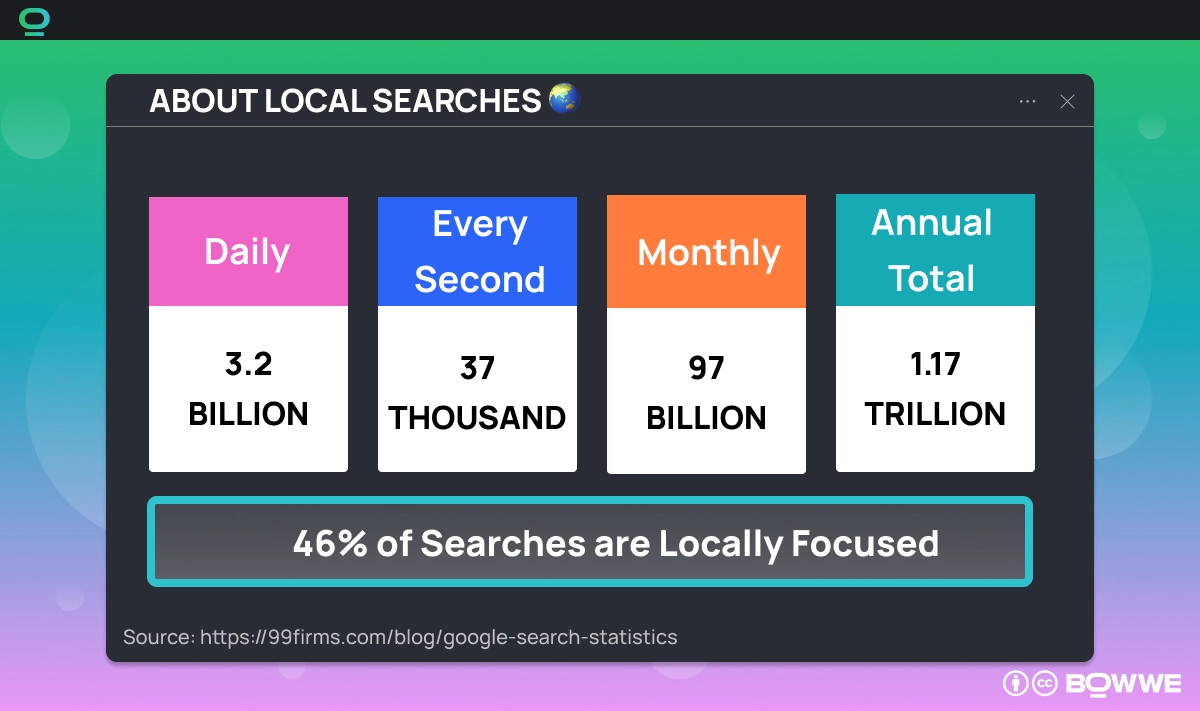
Diving into international SEO is like unlocking a treasure chest of global opportunities. It's essential for several compelling reasons:
1. Global audience engagement
Imagine your business as a tree, and each new market you reach is like planting a seed in fertile soil. Global SEO helps these seeds sprout by attracting a wider audience from various corners of the globe. For businesses, big or small, it's a chance to branch out beyond your local backyard.
2. Creation of global brand
International SEO transforms your brand from local to global. It's a strategy that extends your reach, connecting with diverse cultures and languages. This not only increases your worldwide presence but also builds your reputation as a brand that values and understands global diversity.
3. Cultural adaptation for local relevance
Multilingual SEO is key to adapting your content for various cultural contexts. It involves customizing your message to align with the unique preferences and values of audiences worldwide, ensuring your content is not just seen but also resonates meaningfully with them.
4. Worldwide search reach expansion
Each region has its unique search engine preferences and behaviors. By optimizing for these variations, you ensure your website doesn't just show up, but stands out in search results, whether it's on Google, Yandex, Baidu, or any other local search engine.

How does international SEO work?
International SEO works by optimizing your website for audiences in different countries and languages. It's about making sure your site appears in search results worldwide, appealing to the unique preferences and needs of each region. This involves adjusting your website’s content, design, and technical setup to be accessible and engaging for a global audience. The goal is to make your website not only visible but also relevant and valuable across various international markets, ensuring that your message resonates well with diverse audiences everywhere.
International SEO strategy: Best practices
1. Identifying target markets and languages
Like setting your GPS before a road trip in case of international SEO - your destination is your target markets and the languages they speak.
1.1. Select market
Imagine you run an e-commerce site selling eco-friendly products. Your first task is to determine where these products might have a demand outside your local market. Ask questions like:
- Where are similar products popular?
- Which countries are leading in eco-conscious consumer trends?
- Do I have the resources and opportunities to test specific markets?
Use tools like Google Trends or social media analytics to understand where interest in your product type is high. For instance, if you find that Scandinavian countries show a high interest in sustainable products, these regions might be your initial target markets.
1.2 Identify target language
Next, determine the languages spoken in these markets. While it might be obvious in some cases (like Swedish in Sweden), some countries have multiple languages to consider. For instance, in Belgium, you'd need to consider both Dutch and French.
Here, remember, it's not just about the official language but also about what languages are commonly used online in those regions. Tools like SimilarWeb can provide insights into the preferred languages of users visiting similar websites.
1.3. Be aware of cultural nuance and local trends
Understanding the cultural nuances and local trends of your target markets is crucial. This goes beyond language and delves into the psyche of your potential customers.
- What are their shopping habits?
- What kind of messaging resonates with them?
For example, if targeting Japan, know that a formal and respectful tone in content might be more effective than a casual one. Similarly, if your target market is Brazil, understanding local festivals and holidays could help in creating timely and relevant marketing campaigns.
1.4. Take a closer look at your competitors
Lastly, look at what your competitors are doing in these markets. Analyzing their approach can provide valuable insights into what works and what doesn't. For instance, if a competitor has successfully tapped into the German market with a specific product range, study their strategy – what keywords they use, how they structure their website, and the type of content they produce.
2. Keyword research for multilingual SEO
Conducting keyword research for multilingual SEO is like being a detective in a bustling, global market. Your mission is to uncover the specific phrases and terms your potential customers are using in different regions and languages. This process requires a blend of linguistic knowledge and cultural insight.
2.1. Start with a base/current keyword list around your business
Begin with your current keywords (if you have them) or create a basic list of keywords related to your product or service. Think about what kind of keywords describe your business the best and also what keywords your clients use when they search for your business. For instance, if you're selling handmade pottery, your base list might include terms like "handmade pottery," "ceramic bowls," or "artisan vases."
2.2. Translate and adapt your keywords
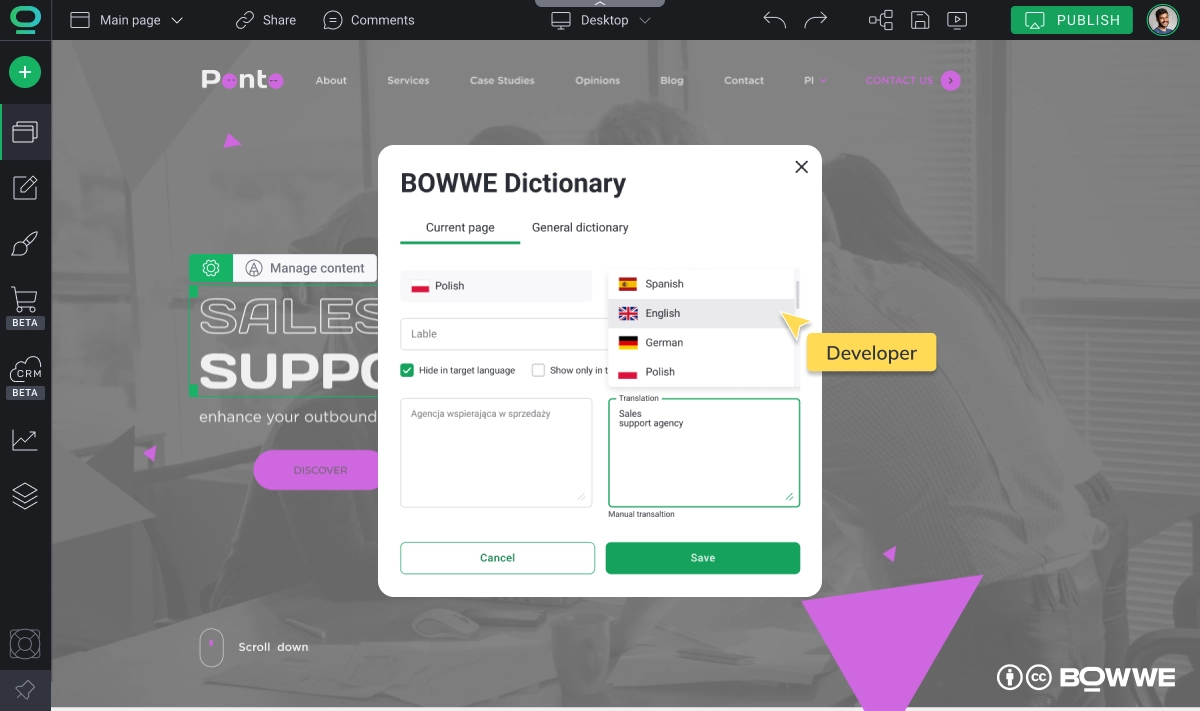
Use translation tools like Google Translate or DeepL for a basic translation of your keywords. However, don't stop there. Literal translations often miss the mark.
Seek the help of native speakers or professional translation services to adapt your keywords culturally. They can provide insights into local idioms or alternative terms that are more commonly used.
2.3. Dive deeper into local keyword research
This is where you dive deeper. Use SEO tools like Ahrefs or SEMrush to research how these keywords perform in your target countries. Look at factors like search volume, keyword difficulty, and related search terms.
For example, you may find that in Italy, people search more often for “vasi in ceramica fatti a mano” (handmade ceramic vases) rather than a direct translation of "artisan vases." Such nuances are crucial in multilingual SEO.
2.4. Understand local search intent
Search intent can vary significantly across cultures. Analyze the top-ranking pages for your translated keywords in different regions to understand what content (for example guide, list, how-to…) satisfies the local audience. For example, in some countries, users might prefer informational content about how the pottery is made, while in others, they might be more interested in the purchasing options and styles available.
3. Creation of culturally relevant content
To effectively reach a global audience, it's essential to create content that's culturally relevant for each market. This means more than just translating text; it involves customizing your content, including text and visuals, to align with the specific cultural and linguistic contexts of your target audiences.
3.1. Adapt visual content
Visuals can speak volumes about cultural sensitivity. The images, color schemes, and even the design aesthetic should align with the cultural preferences of your target market.
If your website features lifestyle images, ensure they reflect the local people and settings. For instance, for the Japanese market, including visuals that represent Japanese beauty ideals and cultural settings can create a stronger connection with your audience.
3.2. Modify website design and layout
Different cultures have different user interface preferences. Some markets, like the USA, prefer clean and minimalistic designs, while others, like China, are accustomed to more information-dense layouts.
Additionally, consider device preferences. In some countries, mobile usage dominates, so a mobile-first design approach is crucial. For instance, in India, optimizing your website for mobile users can significantly enhance user experience and engagement.
3.3. Address cultural sensitivities
Being culturally sensitive is key. This means understanding and respecting cultural norms, values, and taboos. Avoid content that could be potentially offensive or misunderstood.
For example, while humor can be an effective way to engage users, it varies greatly across cultures. What's funny in one country can be offensive in another. Always have local experts review your content to ensure it's culturally appropriate.
4. Implementing international SEO hreflang
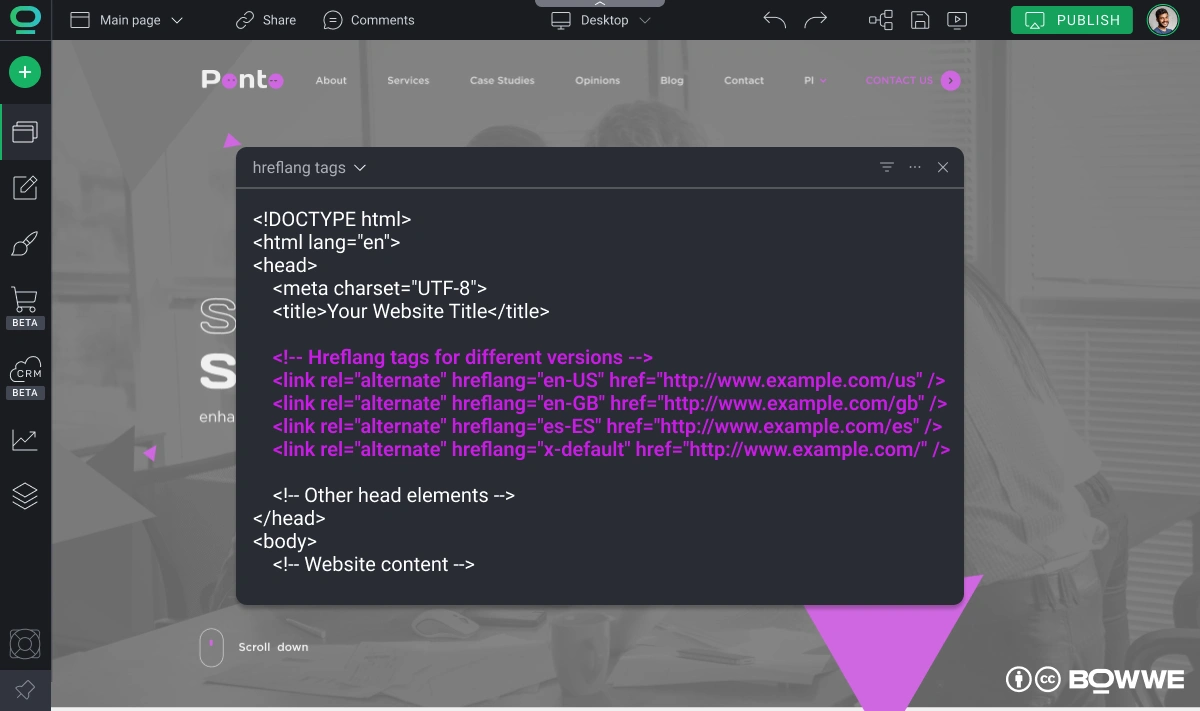
Navigating the implementation of hreflang tags and URL structure for international SEO can be likened to setting up clear signposts in a multilingual city. These signposts (or hreflang tags and URLs) guide both your users and search engines to the right language and regional version of your content.
4.1. Establish a clear international SEO url structure
Your website’s URL structure is the backbone of your international site. It should clearly indicate the language and region you’re targeting. There are a few common approaches:
- Country Code Top-Level Domain (ccTLD): This involves using a specific domain for each country (e.g., .fr for France, .de for Germany). Example: www.yourwebsite.fr for your French audience.
- Subdirectory: This method uses subdirectories with language or country codes on a single global domain. Example: www.yourwebsite.com/fr/ for French content.
- Subdomain: Here, you use a language or country-specific subdomain. Example: fr.example.com for the French version of your site.
If your international sites have vastly different content and require distinct SEO strategies, subdomains might be more effective. If the content is largely similar across languages, subdirectories can be a better choice.
For a new or smaller site trying to build domain authority, subdirectories can be beneficial as they consolidate SEO efforts. For larger, established sites with different content strategies for each language, subdomains offer more flexibility.
Consider also your audience’s preferences. If your website caters to different regions with distinct cultural contexts, subdomains can offer a more tailored experience. For a more unified brand experience, subdirectories can be advantageous.
Most multilingual sites, including those we manage at BOWWE, often find subdirectories to be the most effective solution.
4.2. Implement hreflang tags
Hreflang tags are like labels on your website’s content, telling search engines which language and region your pages are targeting. They help prevent issues like duplicate content in multilingual settings.
The hreflang tag syntax looks like this: <link rel="alternate" href="http://example.com" hreflang="x"/>. Here, href is the URL of the page, and hreflang is the language (and optional country) code. For French content in France, it would be hreflang="fr-fr".
If you don't have a specialist or any tool like BOWWE that will take care of adding the appropriate hreflang tags to your website, you can do it yourself. In this situation follow these tips:
- Place these tags in the <head> section of your HTML on each page of your website. Ensure that every language version of a page has hreflang tags pointing to all other language versions, including itself.
- Each page should link to all its other language versions. This means the English page should link to the French, German, Spanish versions, and so on.
- Be cautious of common errors like incorrect language codes or forgetting to include a self-referencing hreflang tag. Use tools like Google Search Console or hreflang tag checkers to validate your implementation.
5. Building a global link-building strategy
For effective international SEO, it's crucial to build a diverse range of backlinks from around the world. This means establishing links from websites across different countries and regions, showing search engines that your content is globally relevant and valuable. For example, a U.S.-based website gaining backlinks from German, Japanese, and Brazilian sites demonstrates its appeal to an international audience.
5.1. Identify relevant international sources
Begin by identifying websites, blogs, and online platforms that are influential in your target markets and languages. Use tools like Ahrefs or SEMrush to find sites with good domain authority that are relevant to your industry.
For example, if you're a U.S.-based company selling eco-friendly products and targeting the German market, look for popular sustainability blogs or forums in Germany. Tools like Moz's Link Explorer can help identify where your competitors are getting their international backlinks from.
5.2. Tailor content to international audience
To attract backlinks, create content that resonates with your international audience. This means understanding what appeals to them and tailoring your content accordingly.
For instance, if you're targeting the Japanese market, you might create an in-depth guide on how Japanese traditions influence modern eco-friendly practices. Such content is more likely to attract backlinks from Japanese environmental websites and forums.
5.3. Reach out to potential partners
Once you have your content, engage in outreach to these international sites. Personalize your communication and be mindful of cultural nuances. A direct and aggressive approach might work in some cultures, while others may require a more formal and respectful approach.
5.4. Try out different strategies
Don’t limit your efforts to just one type of website or one method of acquiring backlinks. Diversify by engaging in guest blogging, participating in international forums, or collaborating with influencers from your target markets.
For example, you could write a guest post for a popular Spanish eco-blog or collaborate with a French influencer who advocates for sustainable living.
6. Avoidance international SEO cannibalization
SEO cannibalization in an international context occurs when similar or identical content across different language versions of your site competes with each other. For example, if you have an English product page and a French version of the same page, and both appear in search results for the same query, they are cannibalizing each other's chances to rank effectively - in short, they are just making it harder to position well for desired keywords.
6.1. Don’t forget about canonical tags
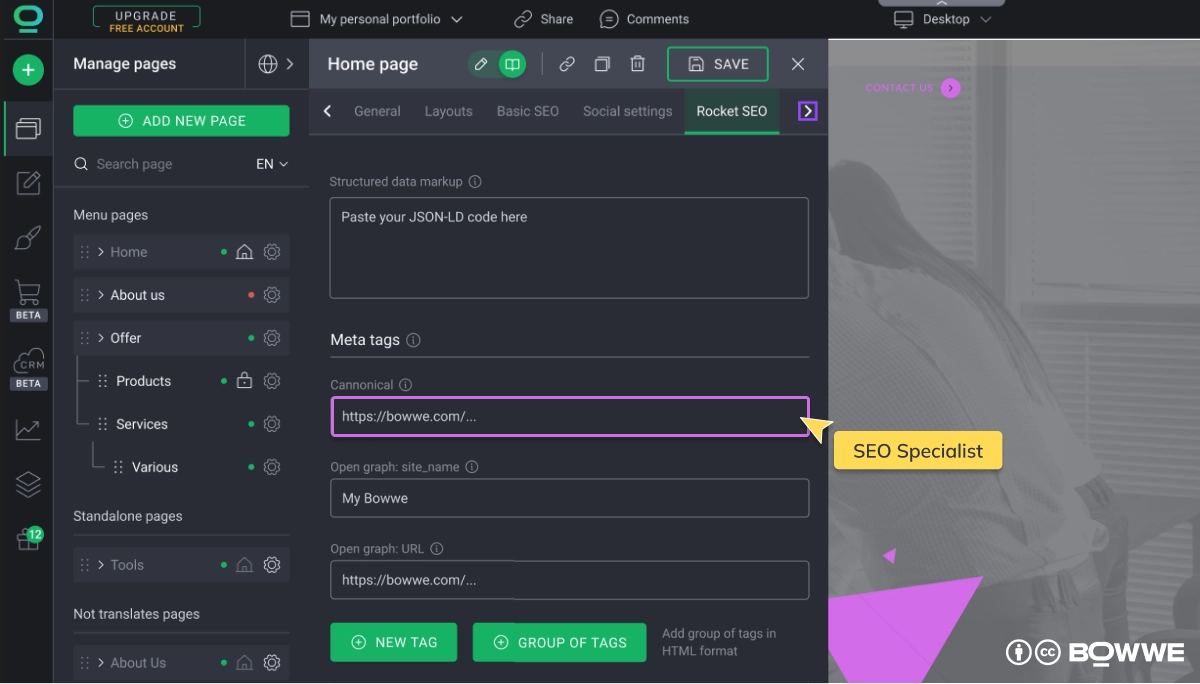
Canonical tags are essential in guiding search engines to recognize the preferred version of your content when multiple language variants exist. To implement a canonical tag, add a line of HTML code in the <head> section of your international website. For example, if the original content is in English, and you have a Spanish version, your English page’s <head> section should include <link rel="canonical" href="http://www.yoursite.com/original-page" />. Similarly, include this tag in the <head> of the Spanish page, pointing to the same original English page URL. This tells search engines that the English version is the primary source, even though content is available in other languages.
In BOWWE you can quickly add a canonical tag to your pages! All you need to do is go to your website's SEO settings and insert the appropriate link in the field intended for adding a canonical tag, that's all. You don't even have to dig into the website code to properly optimize your multilingual website.
6.2. Add redirects based on localization or language
Redirects can be used to guide users and search engines to the correct language version of your website based on their location or browser language settings.
For example, a redirect might automatically take a user from Spain to the Spanish version of your site. While this can be convenient, consider providing an option for users to easily switch back if they prefer browsing in another language. Implementing such redirects should always be balanced with user choice and flexibility to ensure the best overall experience.
Localization redirects, while useful in guiding users to their preferred language version of your website, aren't always necessary and may not suit every site. Before implementing them, assess whether they truly add value for your users.
6.3. Avoid content duplication
If you have content that’s duplicated across different language versions, make sure to localize it to suit each target audience. This isn’t just about translating text; it’s about adapting the content to reflect local interests, examples, and idioms.
For instance, a blog post about “Eco-Friendly Living” for your U.S. audience might have references to local U.S. practices. For the French version, adapt these references to reflect French culture and practices.
7. Creation of international SEO sitemap
A sitemap is an XML file that lists all the URLs of a site, acting as a roadmap for search engines. For a multilingual site, it's crucial that this roadmap clearly indicates the different language versions of each page.
7.1. Keep one sitemap per one language version
Start by creating individual sitemaps for each language or regional version of your site. This makes it easier for search engines to understand and index your site’s structure.
For example, if your website has English, Spanish, and French versions, you should create three separate sitemaps: one for each language.
7.2. Don’t forget about hreflang tags
Remember? We talked about it before, and I’m reminding you about it once again - incorporating hreflang annotations in not only website code but also in sitemaps is crucial for global SEO!
7.3. Keep organized URL structure
Each URL in your sitemap should correspond to the correct language or regional version of your site. This means that URLs in the French sitemap should lead to the French versions of your pages, and so on.
If you’re using a subdirectory structure (e.g., example.com/fr/), make sure that the URLs in the French sitemap start with /fr/.
7.4. Submit sitemaps to search engines and keep it updated
Once your sitemaps are created, submit them to search engines through their respective webmaster tools, like Google Search Console and Bing Webmaster Tools. This step is crucial as it informs search engines about the existence and structure of your multilingual content. Also, keep submitting it after each change - this is especially important for international sites, where changes might occur in one language version and not in others.
8. Making navigation between language versions easy
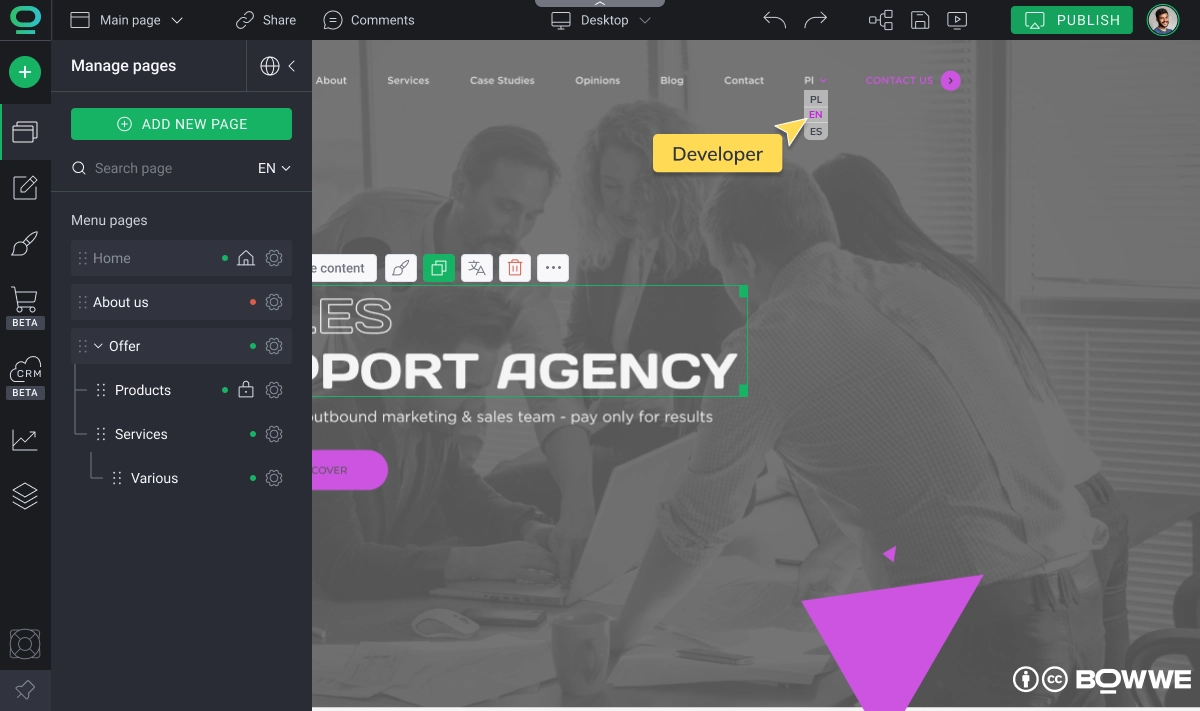
Incorporating a navigation menu and language switcher in your international website is like offering a user-friendly map and compass to your international visitors. It guides them effortlessly to the content most relevant to their language and region.
8.1. Add a language switcher
Include a language switcher to let users choose their preferred language version of your site. Place it prominently, such as in the top right corner of your header. Display language names in their native script, like ‘Español’ for Spanish. Optionally, add country flags next to language choices, but be careful with languages spoken in multiple countries to avoid confusion.
8.2. Make navigation menu intuitive
Ensure your site's navigation menu is easy to use and the same across all language versions. Keep it straightforward with familiar icons and terms like 'Home', 'Products', 'Contact Us'. Adjust the menu labels to suit local terms, for instance, 'Home Appliances' in the US might be 'Domestic Appliances' in the UK.
9. Remembering about local search engines
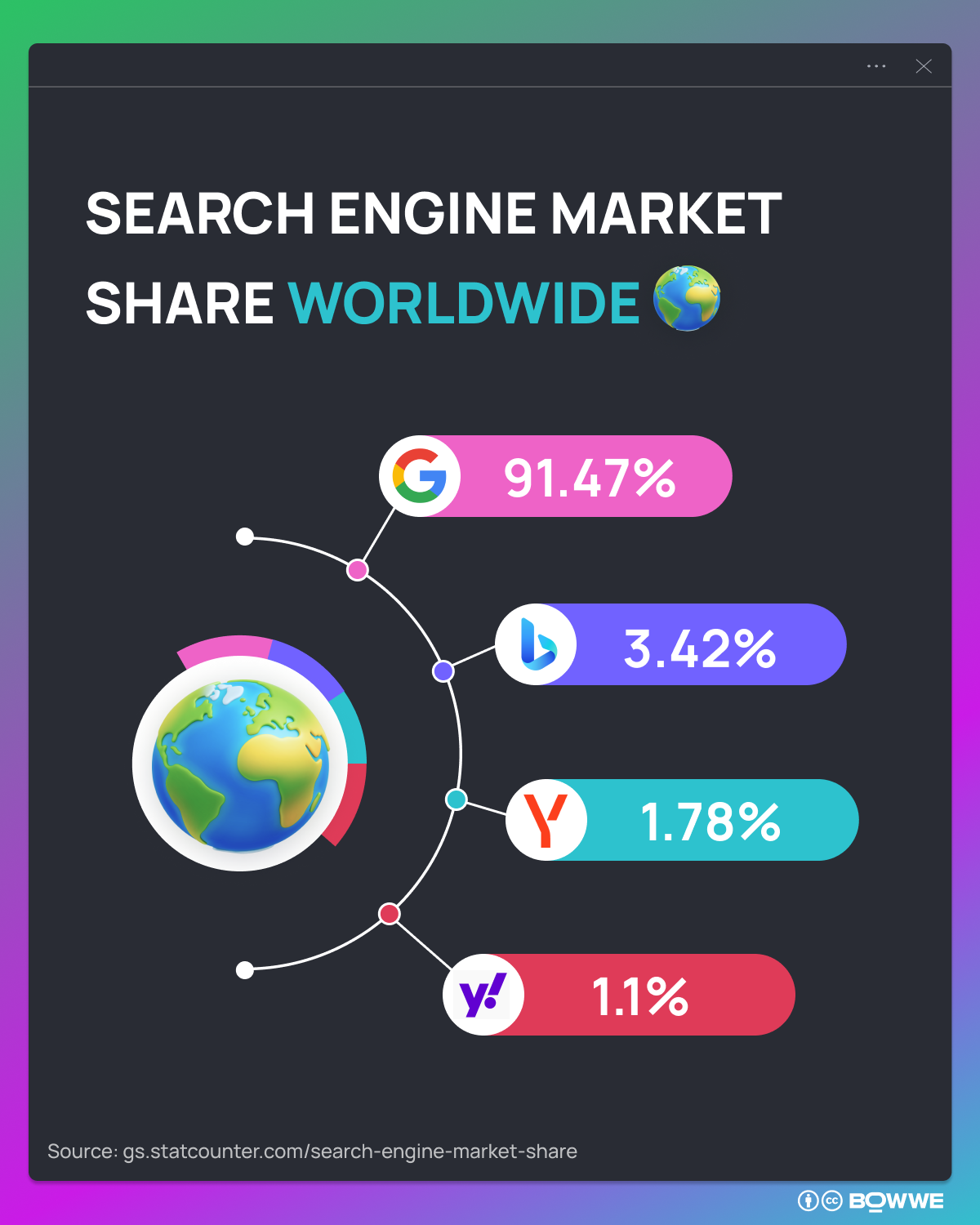
For successful international SEO, it's vital to understand and optimize for the search engines that are popular in your target regions.
While Google commands over 90% of the global search engine market share, it's important to note that in certain countries, less-known local search engines are the dominant players. This regional preference for specific search engines is a key consideration in tailoring your international SEO strategy.
9.1. Undercover dominant players
Like I said before - while Google is dominant globally, other search engines like Baidu in China, Yandex in Russia, or Naver in South Korea have significant local user bases. That means you need to find out if in the market you are targeting there is any other crucial player than Google to which you need to pay attention to.
Start by researching the most popular search engines in your target countries. Tools like StatCounter can provide insights into search engine market shares by country
9.2. Grasp algorithms of different search engines
Understanding that each search engine operates with its unique algorithm and set of ranking factors is crucial for effective international SEO. It’s essential to dive into the specifics of how these algorithms work to optimize your site for different search landscapes. For example, Baidu, a leading search engine in China, prioritizes a high volume of quality Chinese content and local backlinks.
To stay informed and effectively optimize your site, actively follow SEO forums and blogs dedicated to the nuances of these specific search engines. Regularly explore discussions on ranking factors unique to each search engine and stay updated with their major algorithm changes to ensure your international SEO strategy remains on point.
9.3. Match your website to local search engines preferences
Optimizing your website to cater to the preferences of local search engines is a pivotal step in your international SEO strategy. Each search engine is fine-tuned to serve the unique interests and behaviors of its regional audience. By aligning your site with these specific standards, you ensure it resonates with and fulfills the expectations of local users, a crucial factor in boosting engagement and loyalty.
To effectively accomplish this, revisit all previously mentioned strategies - such as conducting in-depth keyword research, creating culturally relevant content, and choosing the appropriate domain structure. Tailor these strategies to align with the nuances of each local search engine. This harmonization ensures that every aspect of your international SEO plan contributes cohesively towards enhanced visibility and user satisfaction in your target markets.
International SEO guide - Summary
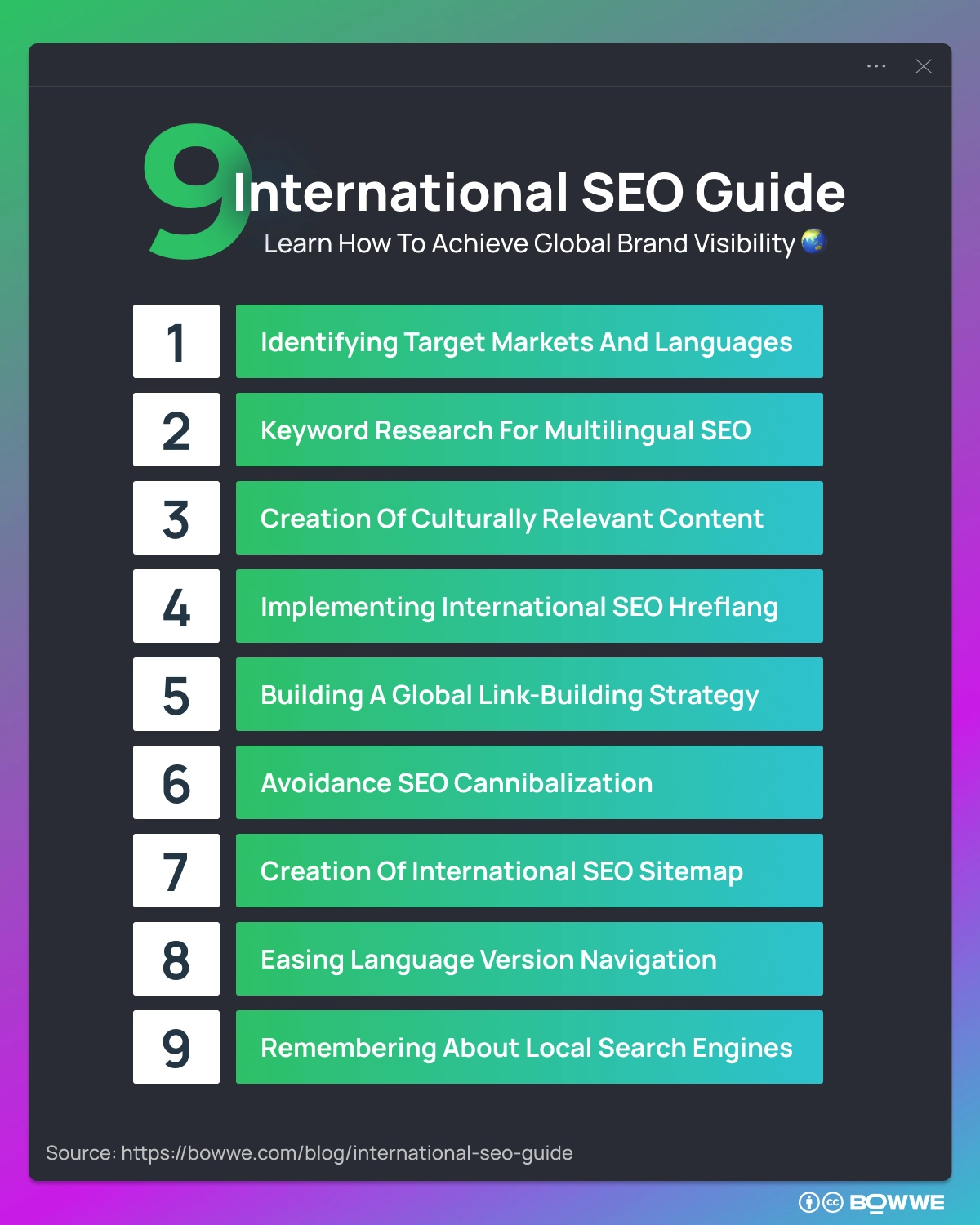
Unlock global market potential with International SEO, an approach crucial for businesses aiming to extend their reach and visibility worldwide. To the most essentials international SEO strategies we count:
1. Identifying target markets and languages
2. Keyword research for multilingual SEO
3. Creation of culturally relevant content
4. Implementing international SEO hreflang
5. Building a global link-building strategy
6. Avoidance international SEO cannibalization
7. Creation of international SEO sitemap
8. Making navigation between language versions easy
9. Remembering about local search engines
In short, a well-crafted international SEO strategy, considering technical, linguistic, and cultural factors, can significantly enhance your brand's global presence and online success.
With BOWWE, navigating the complexities of international SEO becomes seamless. Start your global expansion now – create your website with BOWWE and engage with audiences everywhere🌏
International SEO - FAQ
What is international SEO?
International SEO is the process of optimizing your website so it appears in search results across multiple countries and languages. It involves strategies tailored to target audiences in different regions, considering factors like language, cultural nuances, and local search engine preferences.
What is international SEO vs local SEO?
While international SEO focuses on optimizing for a global audience across various countries and languages, local SEO targets audiences in a specific locality or region. Local SEO involves optimizing for local search terms, local listings (like Google My Business), and ensuring your website is relevant for local cultural and linguistic preferences.
How do I target international SEO?
To target international SEO, you should:
- Conduct keyword research specific to each target country and language.
- Optimize your website structure for international audiences (using hreflang tags, country-specific domains, subdomains, or subdirectories).
- Create culturally relevant and localized content for each target market.
- Build a global link-building strategy with backlinks from relevant sources in target markets.
What is global SEO?
Global SEO, often used interchangeably with international SEO, refers to the process of optimizing your website for a worldwide audience. It involves strategies and practices that ensure your site is accessible, relevant, and competitive in search engines across different countries and languages. with your audience and build a community.
What are the benefits of international SEO?
The benefits of international SEO include:
- Expanded market reach and access to a broader audience.
- Increased brand visibility and recognition on a global scale.
- Enhanced user experience through localization and cultural relevance.
- Potential for increased sales and revenue from various international markets.
How much does international SEO cost?
The cost of international SEO can vary widely depending on several factors, such as the scope of your international market, the complexity of your website, and the level of competition in your target markets. Costs can include translation services, professional SEO consultancy, technical website adjustments, and content creation. It's a scalable investment, often tailored to the specific needs and size of the business.
How do I market my website internationally?
- Conduct market research to identify your target international markets.
- Localize your website's content, including translations and cultural adaptations.
- Use international SEO strategies to optimize your site for different regions.
- Engage in global social media marketing and digital advertising.
- Establish partnerships or collaborations with local influencers or businesses.
Does adding another language to your website improve SEO?
Yes, adding another language to your website can improve SEO, particularly for searches made in that language. It broadens your site’s accessibility and appeal to a multilingual audience. However, it's essential to implement this correctly with hreflang tags and proper site structure to ensure search engines correctly index and serve the content to the right audience.

Karol is a serial entrepreneur, e-commerce speaker m.in for the World Bank, and founder of 3 startups, as part of which he has advised several hundred companies. He was also responsible for projects of the largest financial institutions in Europe, with the smallest project being worth over €50 million.
He has two master's degrees, one in Computer Science and the other in Marketing Management, obtained during his studies in Poland and Portugal. He gained experience in Silicon Valley and while running companies in many countries, including Poland, Portugal, the United States, and Great Britain. For over ten years, he has been helping startups, financial institutions, small and medium-sized enterprises to improve their functioning through digitization.







